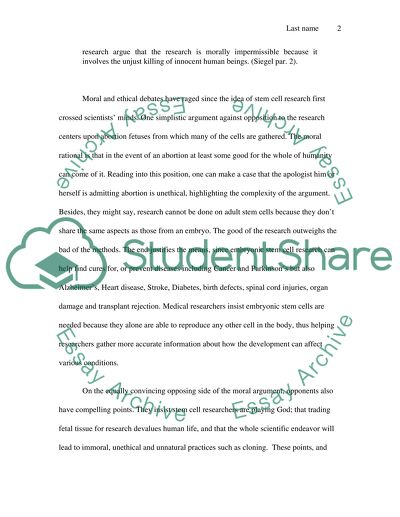Cite this document
(Stem Cell Research: Ethical, Moral and Legal Dilemma Case Study - 1, n.d.)
Stem Cell Research: Ethical, Moral and Legal Dilemma Case Study - 1. Retrieved from https://studentshare.org/medical-science/1576782-if-stem-cell-research-must-rely-only-on-derivation-of-tissue-from-a-vibrant-fetus-is-harvesting-those-cells-in-any-way-immoral-illegal-or-unethical
Stem Cell Research: Ethical, Moral and Legal Dilemma Case Study - 1. Retrieved from https://studentshare.org/medical-science/1576782-if-stem-cell-research-must-rely-only-on-derivation-of-tissue-from-a-vibrant-fetus-is-harvesting-those-cells-in-any-way-immoral-illegal-or-unethical
(Stem Cell Research: Ethical, Moral and Legal Dilemma Case Study - 1)
Stem Cell Research: Ethical, Moral and Legal Dilemma Case Study - 1. https://studentshare.org/medical-science/1576782-if-stem-cell-research-must-rely-only-on-derivation-of-tissue-from-a-vibrant-fetus-is-harvesting-those-cells-in-any-way-immoral-illegal-or-unethical.
Stem Cell Research: Ethical, Moral and Legal Dilemma Case Study - 1. https://studentshare.org/medical-science/1576782-if-stem-cell-research-must-rely-only-on-derivation-of-tissue-from-a-vibrant-fetus-is-harvesting-those-cells-in-any-way-immoral-illegal-or-unethical.
“Stem Cell Research: Ethical, Moral and Legal Dilemma Case Study - 1”. https://studentshare.org/medical-science/1576782-if-stem-cell-research-must-rely-only-on-derivation-of-tissue-from-a-vibrant-fetus-is-harvesting-those-cells-in-any-way-immoral-illegal-or-unethical.


